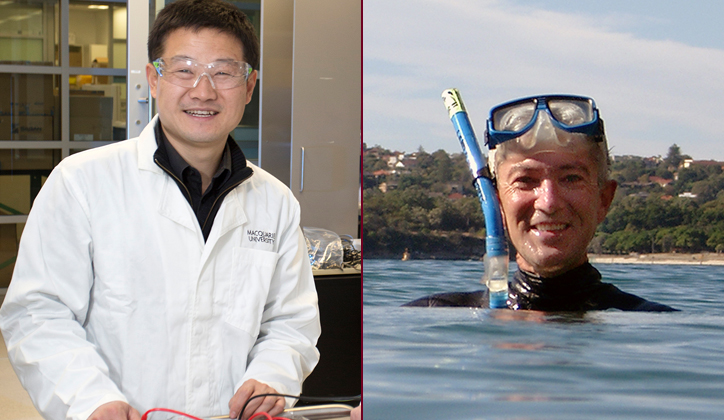Congratulations to Professor David Raftos and Adjunct Professor Dayong Jin on winning prestigious Eureka prizes for their pioneering research.
Professor Raftos was awarded the new Eureka Prize for Rural Innovation for his pioneering work on safeguarding and improving Australia’s iconic oyster industry. Adjunct Professor Jin was awarded the Eureka Prize for Excellence in Interdisciplinary Scientific Research.
Research by Professor David Raftos and researchers from the Department of Biological Sciences promises disease protection for entire populations of oyster. Disease can wipe out an oyster population in a single day, which can mean ruin for small oyster farmers and hurt for the surrounding rural communities.
“This prize is fantastic news because it rewards years of collaborative research with the NSW Department of Primary Industries and Australian oyster farmers,” says Professor Raftos. “It goes to show that you can do first class fundamental research that has direct benefits to real people.”
Working with oyster farmers along Australia’s east coast, Professor Raftos has already helped breed stronger, more disease-resistant oysters that promise a 10 to 20 per cent increase in yield for this $200 million industry.
“The work of Professor Raftos and his team allows us to understand and prevent diseases that can kill millions of oysters in a single outbreak,” Kim McKay AO, Executive Director and CEO of the Australian Museum said. “It’s great news for industry and oyster lovers alike!”
The next step may be to immunise entire crops of oysters against a particular virus. The team’s results show that immunising one oyster might also protect its descendants. Potentially, immunising just a few oysters could create a population of disease-resistant offspring.
If his selective-breeding approach works for Sydney rock oysters, Professor Raftos expects it will also work for other farmed marine creatures, from other oyster varieties to abalone and prawns.
Adjunct Professor Jin’s research on Super Dots focuses on the world’s smallest ‘flashlights’ which may be able to light up diseased cells in our bodies. The infected or cancerous cells may be hiding among millions of healthy cells. The Super Dots team led by Professor Jin from Macquarie and the University of Technology created tiny crystals that can be implanted in the body to reveal these infected or cancerous cells.
Professor Tanya Monro from the University of South Australia and University of Adelaide, and Professor Bradley Walsh from Minomic International and Macquarie are also members of the Super Dots team. The work is being progressed by the ARC Centre of Excellence for Nanoscale BioPhotonics.
The Super Dots team has developed fluorescing nanocrystals that ‘switch on’ at different times, shining an intense, short burst of light – just tens of millionths of a second – that can reveal any diseased cells.
“By combining physics, chemistry and biology, this research should ultimately allow us to watch the interaction between drugs and cancerous cells at a molecular level within the patient’s body,” Kim McKay AO, Executive Director and CEO of the Australian Museum said.
As well as real-time diagnosis of disease, the technology has potential for creating invisible, lifetime-coded inks that could add ‘uncrackable’ security to banknotes and passports.

